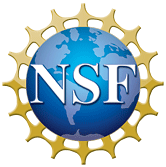Understanding how exposure to chemicals in the environment may raise the risk of breast cancer could offer clues to preventing the disease. Currently, the vast majority of chemicals found in homes, consumer products, and the environment have not been safety-tested. For those chemicals that are tested, most of the methods used are not designed to detect chemical effects specific to breast cancer, and they are typically too time- and resource-intensive to screen the tens of thousands of chemicals already on the market. As chemicals in the environment are increasingly suspected to contribute—directly or indirectly—to breast cancer risk, improving these tests has become a top research priority.
To increase the relevance of chemical testing to breast cancer, we will develop new screening methods, adapting cell-based (in vitro) chemical tests for use in breast cells and new assays, such as those for the mammary-cell specific enzymes involved in estrogen production. By conducting the new tests using known carcinogens, as well as chemicals known not to cause breast cancer, we aim to identify the assays that best predict which chemicals might contribute to the disease.
Results will improve the ability to screen large numbers of chemicals as well as chemical mixtures, such as those in consumer products, house dust, drinking water, and air. The new screening tools could inform the design of safer chemicals (green chemistry), enable manufacturers to select better materials, help regulatory agencies identify chemicals of concern, and contribute to the understanding of environmental factors that contribute to breast cancer risk.
The project is funded by a 3-year grant from the California Breast Cancer Research Program, administered by the UC Office of the President. It builds on the 2010 Breast Cancer and Chemicals Policy Project, as well as major new initiatives at the US Environmental Protection Agency (EPA’s ToxCast program) and the National Toxicology Program (NTP’s Tox21 program), both of which are developing rapid chemical screening methods to fill current gaps in chemical safety evaluation. An Advisory Council consisting of members of the breast cancer advocacy community will provide input to the project and assist with disseminating research findings to affected communities.
